English | Dutch |
|
| Concrete tourist jungle | |
Tenneville (Belgium) to Ourique (Portugal), March 2016
|
|
| |
|
The trip to the south is progressing well. We initially thought to see a few things in France, but the weather is just too bad. An overcast sky, strong wind and drizzle, even colours the picturesque and rolling landscape of the Champagne region and Auvergne grey. The heater in our old jeep is at the maximum, which is just enough to get it comfortably warm in the car. We decided to take the smaller roads in France, because the toll for the highways is expensive, and since we cannot drive much faster than 80 kilometres per hour, these roads are fine for us. Our first real stop of a few days is in Millau, a small town in southwest France which has become famous for its fabulous beautiful bridge. After a few days in the area, we drove to Perpignan, near the Spanish border. While walking through the city centre, Ivonne wants to film one of the old alleyways. Within seconds, we are approached by an annoying village idiot/weirdo. Due to his enormous length of about two meters ten, strangely shaved hairstyle and pants that are at least ten centimetres too short, he is suspiciously similar to the character ‘Jaws’ in the older James Bond movies. He thinks Ivonne filmed him, and shows his disagreement by loud shouting and arm gestures. We don’t speak French well, but we understand that he wants us to go to the police with him. But because he’s a weirdo, we decide to walk away and after a few minutes we lost him. But some street down the block, he’s back again, this time with a smartphone. He takes pictures of us and shouts that he will show them to the police. Eventually he leaves. |
|
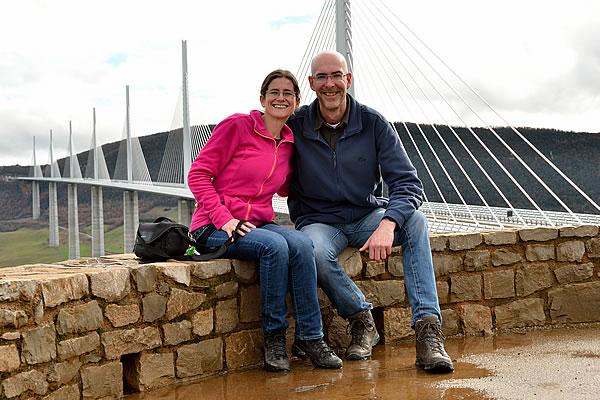 |
|
Us in front of the fantastic bridge in Millau (France) |
|
The next day we cross the border and drive along the Costa Brava to Barcelona. The first part of the Costa Brava, till just beyond Tossa de Mar, is really beautiful, and is in our opinion one of the finest pieces of Spanish coast that we saw during our trip along the coast of Spain to the border with Portugal. Barcelona was lovely as expected. But our impression was that the city is a little too slick. The city has become a huge tourist attraction and that has polished the city, partly removing the authentic atmosphere. That’s why we like cities like Naples or Palermo in Italy more as a city trip destination; even though these cities have no La Sagrada Familia. From Barcelona we drove south along the coast; still looking for comfortable weather. We visited the Ebro Delta to see birds, and visited the Las Fallas festival in Valencia. By the way, Valencia is a very nice city, and its dry and warm climate makes it undoubtedly a very nice city in Spain to live in. The Spanish coast in this part of Spain is very ugly. Large citrus plantations give the landscape a sad look. This sadness is even worse when you drive to the city of Almeria, in the extreme southwestern tip of the Iberian Peninsula. This is the tomatoes region of the country. Ugly plastic greenhouses determine here the landscape; as far as the eye can see. The tiny national park Cabo de Gata-Nijar is the only bright spot of the region. However, the national park is a good place to see a number of birds that are very difficult to see elsewhere, like the White-headed Duck, the Trumpeter Finch and the Black-bellied Sandgrouse. Further west begins the Costa del Sol, with Malaga and Marbella as the 'crown jewels' of the coast. The Costa del Sol is seen as the only true sunny winter destination on the mainland of Europe, and that has made the region very popular. |
|
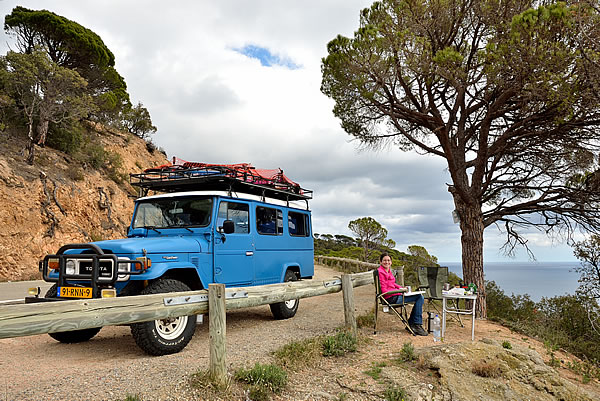 |
|
Picnic at the Costa Brava |
|
| The Costa del Sol is undoubtedly the example of the damage that can be caused to a coast by unregulated tourist industry development. The coast between Malaga and Estepona has been completely ruined by the unlimited construction of hotels, apartment buildings, restaurants and other tourist infrastructure. It has become a concrete tourist jungle, with a narrow strip of golden sand where sun worshipers find the ideal place to fry themselves like a fish. The hills in the hinterland of the coast are filled with villas owned by generally wealthier and older northern Europeans who have bought their own place here to escape the cold winters in the north for a few months each year. Since these people are only here a few months a year, and usually all at the same time, the area is extinct in other parts of the year. Gibraltar is the turning point, literally and figuratively. This piece of England on the Iberian Peninsula is the dividing line between the Atlantic and the Mediterranean climate of Spain. East of the cliff (Costa del Sol) has a Mediterranean (warmer, drier) climate, and west (towards Portugal) is characterized by an Atlantic climate (colder, wetter). And that line means that the snowbirds are flocking east of Gibraltar. On the western side of Gibraltar, you enter the real Spain again. The area between Gibraltar and Cadiz has some wonderful birding areas where it is possible to see a few very rare bird species in a few hours’ time, such as the Bald Ibis, the Eurasian Griffon and Black Vulture (Cinereous Vulture). Cadiz is a beautiful city which is part of the so-called Sherry Triangle, the region of Spain where Sherry comes from. The other vertices of the triangles are the cities with the wonderful names Jerez de la Frontera and Sanlucar de Barrameda, where not only the sherry, but also the Flamenco still really belongs to the local tradition. According to experts is this region the last piece of the real Andalusia. |
|
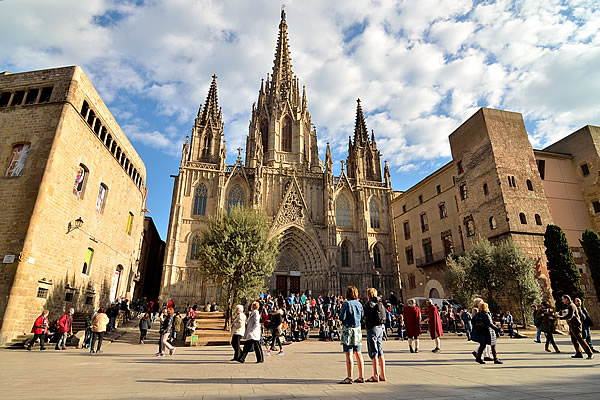 |
|
La Catedral in Barcelona |
|
 |
|
Girls preparing for the flower parade during Valencia's Las Fallas festival |
|
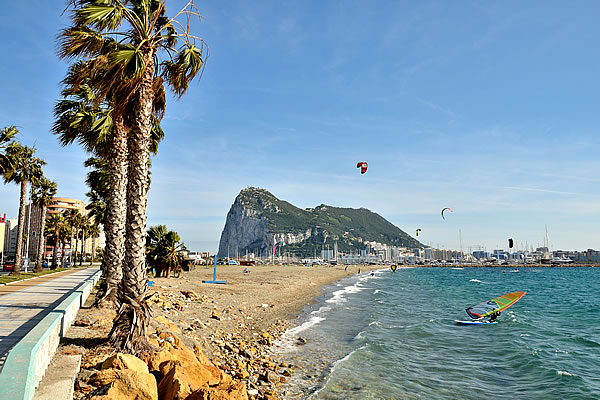 |
|
Gibraltar seen from Spain's La Linea de la Concepcion |
|
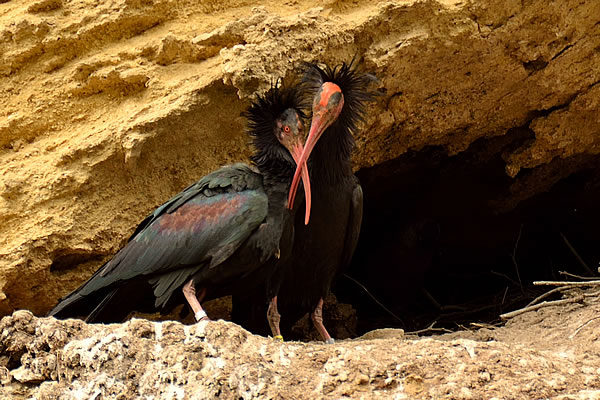 |
|
A couple of romantic Bald Ibis during mating time |
|
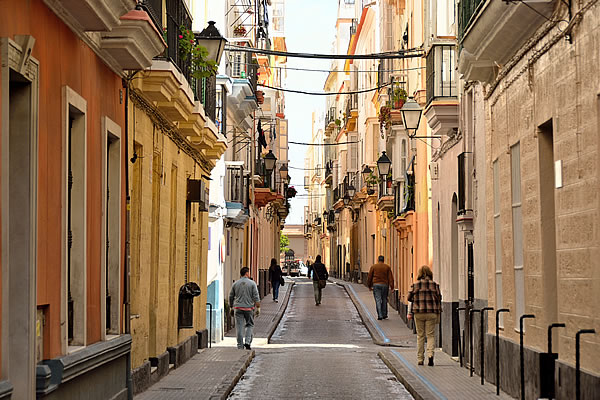 |
|
The old town of Cadiz |
|
| <Previous weblog> | |